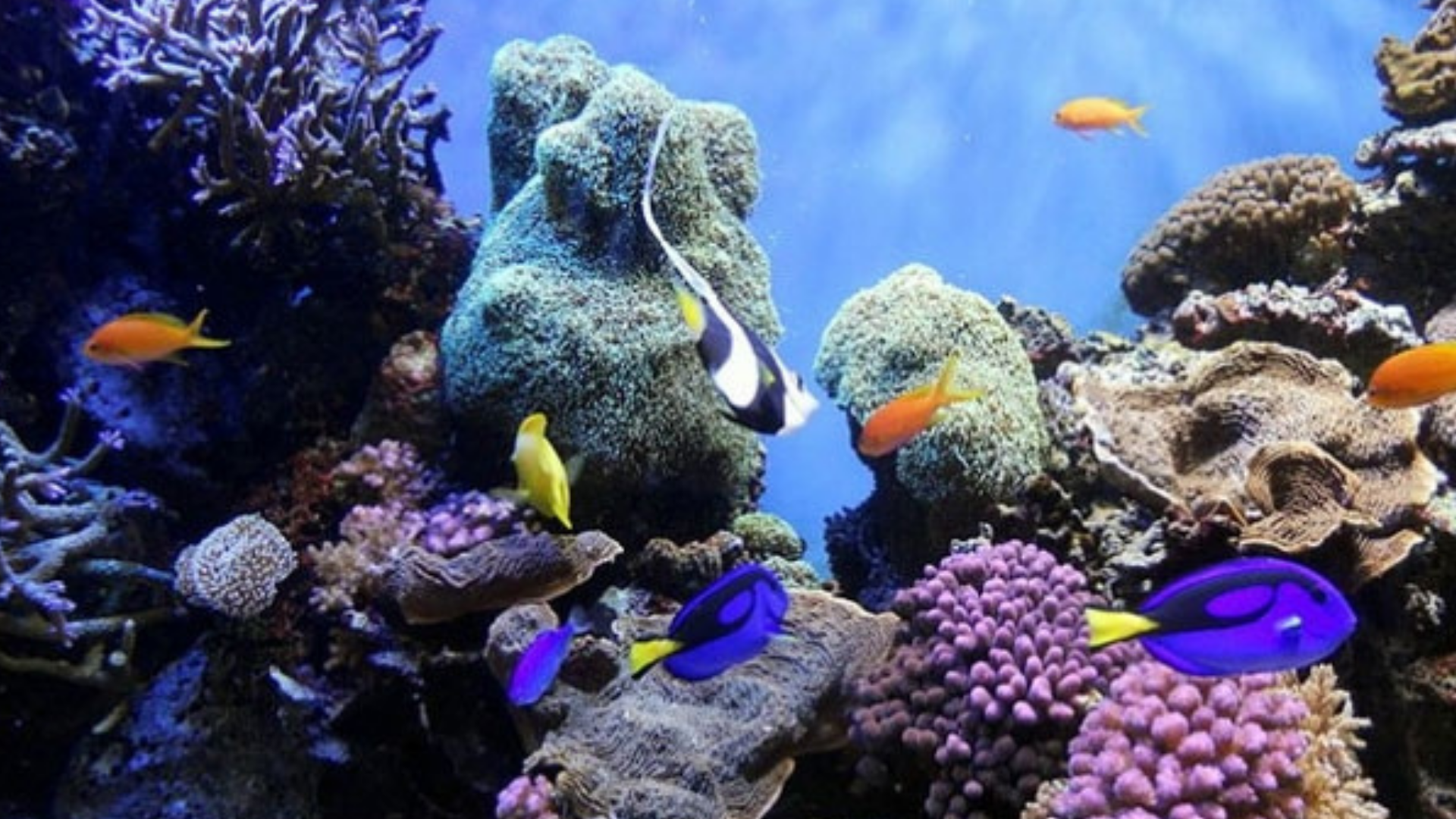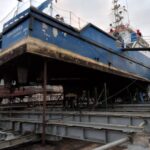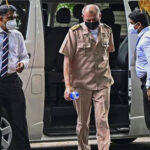With its fascinating, colourful and unique marine life, Sri Lanka’s ocean has for many years been one of the most sought after tourist attractions around the world.
Beneath the sea lies a treasure trove of interesting marine life yet to be discovered, and among these, corals have specifically become of great interest to tourists and locals alike, who go in their hundreds to get a glimpse of some of the most unique and attractive colonies that lie beneath the ocean. However, as with most other marine species, corals too are under threat for many reasons. Bad fishing practices, fishing nets, boat anchorage, oil spills, spearfishing, and disposal of solid waste have been listed as some of the main causes of corals’ destruction.
A demand to illegally smuggle out corals from the country in the past has also added to the growing threat of their survival. On three occasions the Sri Lanka Customs (SLC) apprehended several Chinese individuals attempting to smuggle out corals at the Bandaranaike International Airport. According to SLC officials in the most recent incident, the corals were freshly broken and still damp when they were found in the baggage of the Chinese official.
“In the early mid-1980s, the lime trade resulted in many corals being destroyed. Natural disasters such as the bleaching process that took place in 1998 also destroyed a large number of corals. Corals are very sensitive to climate change. Due to the bleaching event that took place at the time, most of the corals that were affected lost their colour” says Ocean Resources Conservation Association (ORCA) Marine Naturalist Prasanna Weerakkody.
A bleaching event occurs when the temperature in the sea suddenly shoots up by several degrees in the Indian Ocean and affects the colours of the corals.

“There are microscopic algae that live inside the tissue of every coral and it is the algae that give the corals their beautiful colours. The corals don’t have a natural colour and are also known to benefit from up to 90% to 95% due to the algae’s presence in its tissues. It is the algae that provide the coral with its source of food. The algae absorb carbon dioxide. Then, with the use of sunlight, converts this carbon dioxide into a food source and feeds it directly to the corals. But when the temperature in the water suddenly rises, the corals throw the algae out of their tissue,” Weerakkody said.
He says when the coral loses the algae it loses its colour and becomes white and this is known as a bleaching event. “However when the temperature goes down the algae goes back into the corals’ tissue and starts reproducing the food source again. When the algae are out of the coral depending on the coral species it may survive from a couple of weeks to a month before dying,” Weerakkody revealed.
Some of Sri Lanka’s corals were also destroyed in December 2014 during the rains when a large outflow of fresh water from the lagoons entered the sea. The freshwater remained for several weeks over the reefs.
However, the most destructive activities of the lot would be the tourist and local pressure. An increase in tourists and locals to the Pigeon Islands and other areas where coral reefs are an attraction resulted in badly damaging the corals. However, with the spread of COVID 19 and the resulting lockdown in some parts of the country, the corals may yet stand a chance of survival.
Commenting on COVID 19 and corals’ protection, Weerakkody says this is only one part of the story. “I did one dive at Pigeon Islands in August 2020 and I noticed the reef was in very good condition. Pigeon Islands always has a large number of tourists. You get around 600 to 700 tourists per day at Pigeon Islands. This can have a big effect on the reef. Sun cream can also contribute towards the impact on the reef when many tourists get into the sea. This is an area where many tourists go swimming very often. You can see a lot of invasive species like the black sponge in this area. You also see a lot of damage here. But last year this area was in good condition,” Weerakkody explained.
He said the invasive species level was very low and that invasive species increase when the pollution is high. “The fact that this area of the Reef in Pigeon Islands was in good condition is clearly because of Coronavirus. However other factors also contribute to the destroying of corals. Even though one of the biggest impacts on corals is the tourist pressure, a reduction in tourist pressure will not give the corals a chance to survive, because they are threatened by the fisheries pressure,” Weerakkody added. According to him, there is some tourism happening and there is a certain amount of damage due to people walking on the corals at the Kalpitiya Bar Reef. “The biggest problem in the Bar Reef is the fishing community. Fish dynamiting can also damage the corals. But when there is tourism in the area it prevents fishermen from using nets and dynamite, as they are afraid of getting caught. This protects the corals. A reduction in foreign tourists alone is not enough for the reef to recover. The local tourists also have to reduce. Local tourist numbers going down is beneficial especially on the coastal reef,” Weerakkody said.
He added that in Rumassala you see people trampling coral because it is a shallow reef but it is another issue that damages the corals – it is the fish dynamiting. “Fish dynamiting was done during the Civil war. After the war ended in 2009 people who were dynamiting moved out of this practice and started taking tourists to see the corals reefs as this was more popular and earned them a better income. In 1998 the Bar Reef died, but after the war Civil war ended the reef was in good shape because there were no fisheries. The Sri Lanka Navy didn’t allow fishing at the time, so the Reef had recovered well. So as we can see in certain areas COVID 19 will definitely have an impact and in other areas, it is a mixed situation,” Weerakkody explained.
Commenting on COVID 19 and the effect on corals, Chairman Turtle Conservation Project (TCP) Thushan Kapurusinghe tourists go snorkelling more than scuba diving and if you go to Hikkaduwa, Pigeon Islands and the Kalpitiya Bar Reef there are many tourists, so there is more harm to the corals. “Corals get broken when tourists step on them. However much we say not to stand on the corals, tourists get down from the boats and step on the corals. Some boats put down their anchor and this damages the corals,” Kapurusinghe said.
He says due to the Coronavirus the damage to corals was less because local and foreign tourists were less. “But there is another side to this. As an example, we know that a large number of Sri Lanka Navy personnel were infected with COVID 19. During the Corona lockdown Wildlife officers and Navy Personnel were restricted in their movements. They couldn’t do their job properly. It is possible that fish dynamiting could take place illegally due to the restriction of the relevant authorities and this could damage the corals,” Kapurusinghe explained.
He added that during the warakan time or when the sea is rough corals can get broken. “In schools, universities and the Fisheries sectors, programs creating awareness on corals were done. But due to COVID 19 this has stopped. As volunteers, as Interns, as University students, these people got involved in conservation efforts and research. Normal people of the public got involved in protecting corals. But to the COVID 19 restrictions, this work has stopped. Due to COVID 19 University students and research students are also told to stay at home and work. Some Universities have told their students to call relevant people on the phone and get the information to complete their dissertation. So COVID 19 has in an indirect way contributed towards the coral destruction,” Kapurusinghe said.
There are 180 species of corals in the country and all are protected under Section 31B of the Fauna and Flora Protection Ordinance (FFPO). Under section 31B of the FFPO, no person can break, destroy or keep in their possession any part of a coral or sell or export any dead or live corals. Under Section 40 of the FFPO a person cannot export dead or live corals and under Section 31A of the Coast Conservation Act (CCA) a person cannot break, destroy or keep in their possession any coral dead or alive.






Leave a Reply